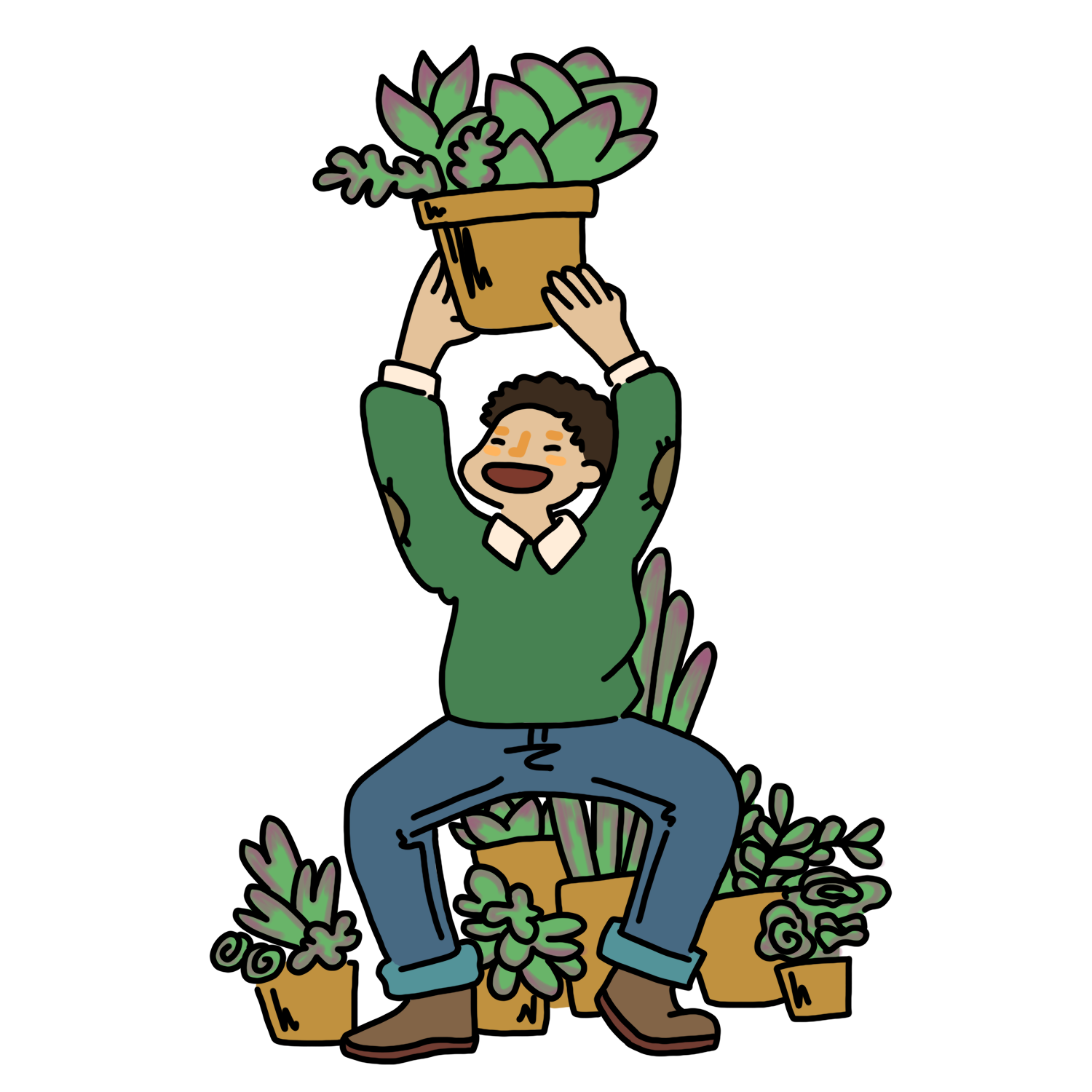
Among the rolls of toilet paper and disinfectant wipes stacked in shoppers’ carts this past year, many people, like myself, stocked up on another essential in the COVID-19 pandemic: plants. Last March I only had five little succulents; now, my house has 56 plants. I have bought over 40 plants this year, and while some have come and gone, others have grown and become great comforts in my life. I certainly have felt better knowing that my house has evolved into something like a greenhouse, and that my new friends depend on me to flourish. Whether you live on or off campus, or think you are cursed with a black thumb, you may consider bringing home the following plants, considering they can reduce anxiety and improve their owner’s mood.
If you are a newbie to the plant world, I suggest you start with succulents. Succulents are mostly independent plants and can thrive at any humidity level. These green babies love direct sunlight and should be watered every 2-3 weeks depending on how much light they receive. The most common way of killing succulents is by overwatering; I overwatered my first succulent so much that it literally turned into succulent soup. If you are an anxious plant parent like me, buy a spray bottle and spray the succulents once per week. Common places for them to live on are windowsills, desks or coffee tables. So the next time you are at Fred Meyer, consider purchasing one or two of these leafy friends.
The second plant I would recommend is the snake plant. This plant literally thrives off of neglect, so if you want a plant with no baggage, this is the one for you. Snake plants do best in bright light or low light conditions. In the winter, they should be watered every month, or when the soil is dry to the touch. In other seasons, I would recommend watering them every 2-3 weeks. Snake plants can be killed by overwatering. Place the plant away from drafty spaces. Typically, this arid plant thrives between temperatures of 70 and 90 degrees Fahrenheit.
The third plant on this list is the ZZ plant. The ZZ plant is a luscious, beautiful green friend that likes medium-to-low indirect sunlight; they do not fare well in direct sunlight. This plant prefers to be watered every 2-3 weeks, but it can be watered more frequently if it receives more bright light; if the plant receives less light, it can be watered less often. Like succulents and snake plants, the ZZ plant will do fine amongst average humidity in any home.
The last plant family I would recommend for beginners comes from the pothos family. Pothos come in a variety of forms: the golden pothos, the neon pothos, the marble queen, the Manjula pothos and more. Pothos can take a fair share of neglect and are relatively easy to look after. Pothos, also known as Devil’s Ivy, grow fast, so if you are looking to turn your room into the Amazon rainforest, this plant has your name on it. Pothos tend to thrive in bright, indirect light but can also handle medium-to-low indirect light; do not place them in direct sunlight or the leaves will turn crispier than your bread in The Bon’s toaster. Water your pothos every week or two, but make sure to water more frequently in brighter spaces.
Now, you are probably wondering: where can I purchase these resilient plants? Portland has a variety of plant stores to choose from, ranging from Fred Meyer’s nursery to Arium Botanicals in Northeast Portland. If you are on a budget and do not want your wallet to have a temper tantrum, I would recommend shopping at Fred Meyer, Lowe’s or Home Depot. These stores typically have a good selection for a cheaper price. If your budget has some wiggle room and you wish to support small businesses, I would head on over to Arium Botanicals, Pistils Nursery, Birds and Bees Nursery or Arranged and Rooted. Whether you prefer cheap and corporate or aesthetic and expensive shops, Portland has a variety of places for you to start your plant projects.
While jumping into the plant fad might seem overwhelming, there are some easy tricks to prevent you from watering your plants with your own tears. To keep track of your plants’ needs, create a plant log where you write down when a plant was last watered and how much sunlight it needs. With a plant log and a frequent check-in with your plants, you will be sure to develop a green thumb and a greater appreciation for your new leafy roommates.
Subscribe to the Mossy Log Newsletter
Stay up to date with the goings-on at Lewis & Clark! Get the top stories or your favorite section delivered to your inbox whenever we release a new issue.

Leave a Reply